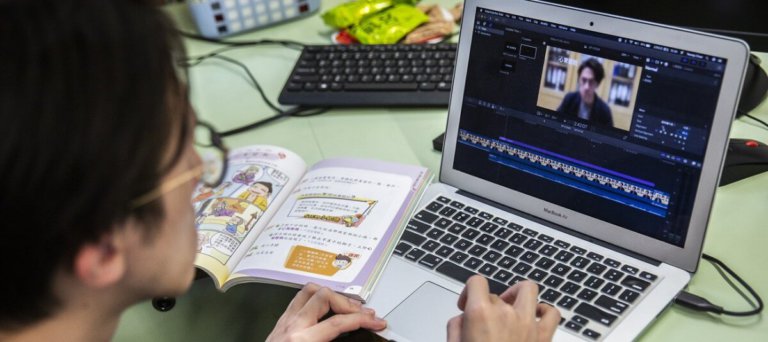
In light of rising concerns about the spread of COVID-19 and calls to contain the virus, a growing number of post-secondary institutions have shut down in-person classes. The virus has revealed vulnerabilities in post-secondary systems around the world. It is now clear that society needs flexible and resilient education systems as we face unpredictable futures.
People in the educational technology industry, which produces everything from online learning software to tools that track the productivity of students, believe they’re poised to help tackle challenges.
But many educators have doubts given what some see as problems evolving from the use of technology in teaching and learning — everything from using technology for student surveillance to the impact of using it to bundle pricey textbooks with software. Ethical concerns are especially troublesome.
Saving higher education?
As our scholarship has documented, technologies meant to make education, and especially teaching, more flexible or more responsive don’t always deliver in a straightforward way. This is because educational technology is not simply a tool that does a wholly predictable or singular job like a hammer or a screwdriver.

A student walks toward Royce Hall on the campus of the University of California at Los Angeles (UCLA) in Los Angeles, California on March 11, 2020. Starting this week many southern California universities including UCLA will suspend in-person classes due to coronavirus concerns. Source: AFP/Robyn Beck
Even so, the educational technology industry, backed by huge companies like Microsoft and Amazon, continues to position itself as a solution to today’s education problems. Some people even go so far as to suggest technology can save higher education.
In this back and forth between proponents and skeptics, the impacts of COVID-19 on educational institutions and students offer a chance to carefully examine educational technology in acute, crisis-driven contexts.
Positive experiences
While the work to transition face-to-face instruction to online environments would mean an initial massive increase in working hours, the results for some educators and some students so far are promising.
In the emerging and ever-changing COVID-19 context, New York University Shanghai and Duke Kunshan University offer examples of successful adaptation and rapid deployment of educational technology products, like the video-conferencing platform Zoom and online course provider Coursera.
Significantly, these universities had existing experience with these technologies that they were able to expand; they weren’t starting from scratch with new and untested tech solutions.
Negative experiences
Some schools in Australia have struggled with accommodating the rapid switch to online learning, especially in light of China’s “Great Firewall,” which denies people located in China access to a host of online tools and sites such as YouTube.
Some instructors and school leaders are facing pains in transitioning to online learning. Many more share concerns for students who don’t have easy access to wifi or computers.
The alternative, however, isn’t appealing. COVID-19 or any other widely disruptive virus poses high risks for job losses and decreased tuition revenue. There is also the increasing possibility of long-term impacts related to future budget constraints.
Established familiarity
Some institutions have rapidly innovated and implemented online learning, due in part to established familiarity with the necessary tools, teaching approaches and considerations with online learning. This has resulted in less disruption for many students unable to return to in-person classes.
We identified four valuable takeaways here: effective adaptation to rapidly shifting circumstances is contingent on skill, preparedness, a willingness to collaborate and offer care and support, and a cautious attitude towards untested educational technology.
In case of crises, the ability to offer effective online post-secondary learning is going to come down to both professors and staff at centres for teaching and learning.
Teaching online isn’t a solo sport. Professors need training in how to involve students in online discussions and facilitate their deeper understanding of taught material. Instructional designers or educational technologists can help professors figure out how to best teach with technology and make the most of online learning.
If institutions now lack such preparation and planning measures, these need to be put in place now — yesterday — in order to avoid the excessive demands and tensions that come from adopting things quickly.
The clear need for post-secondary online learning expertise in this crisis should serve as a reminder that institutions need to cultivate this competency.
Institutions’ outsourcing of online learning in recent years may enable them to benefit from the expertise of other professionals. In choosing this path, however, they run the risk of losing their in-house expertise and becoming dependent on the stability, success and future directions of private companies.
Sharing resources, strategies
Sharing resources and strategies will be integral to instructors’ success with teaching online. A crowdsourced document listing resources from US universities related to planning for COVID-19 is already circulating in the higher education community.

A student wears a face mask to protect against the COVID-19 (Coronavirus) as he leaves the campus of the UCLA college in Westwood, California on March 6, 2020. Source: AFP/Mark Ralston
In this context, it’s important to remind ourselves that good online education isn’t just about providing information to students and asking them to learn the material. Good online education requires planning and thoughtful design for it to not be a second-tier option. We don’t anticipate that rapid transition to remote teaching would be representative of the best that online learning has to offer.
Online learning can be an effective, rich and fulfilling experience but it requires us to pay careful attention to student experiences, as well as to take on a critical view of the claims of educational technology companies.
Kindergarten to Grade 12 closures
Notably, these lessons will apply beyond higher education. Many kindergarten to Grade 12 schools faced closures in 2009 in response to the H1N1 pandemic, and this is now becoming a growing global reality. Caregivers will need to negotiate work and children, a struggle which many people may not be ready for.
In this increasingly unstable world, crises potentially impact our education systems. This will be true whether the crisis is caused by the circulation of a new pathogen, or something else entirely: hurricanes, flooding or wildfire, now more common due to climate change.
We have before us a stark reminder that we should approach the promises of technological solutions with caution. Flexible and resilient educational systems require more than tools. They demand collaboration, care, preparation, expertise, resources and learning lessons from the past.
By Shandell Houlden, Researcher and Post-doctoral Fellow, Royal Roads University and George Veletsianos, Professor and Canada Research Chair, Royal Roads University
This article is republished from The Conversation under a Creative Commons license. Read the original article.
Liked this? Then you’ll love…
Classes go online at top US universities as coronavirus outbreak turns to pandemic
The differences between MOOC-based degrees and online degrees







